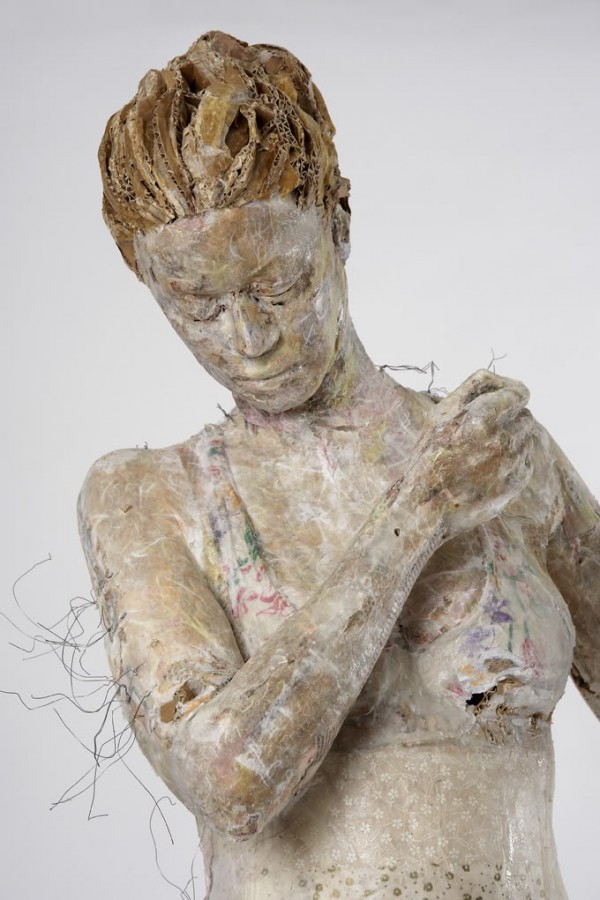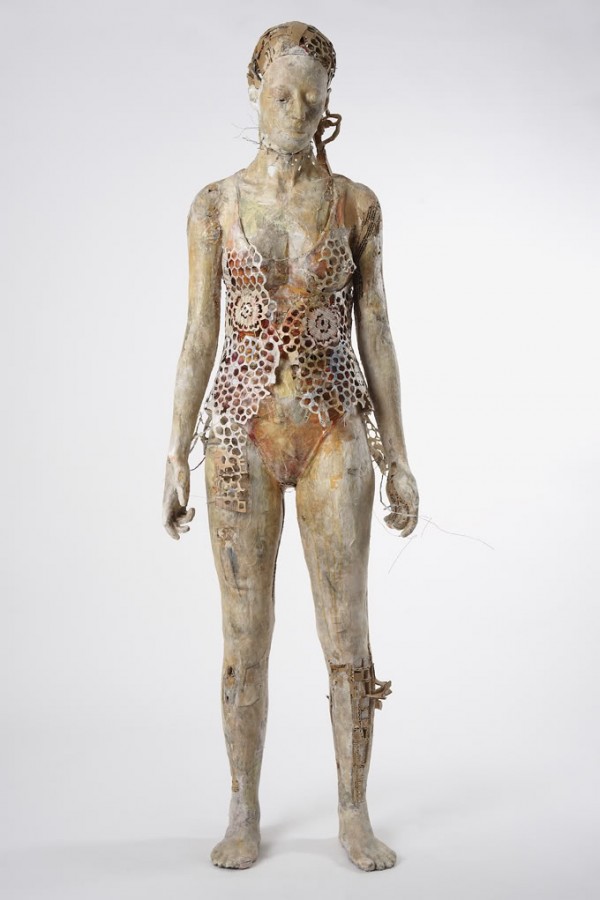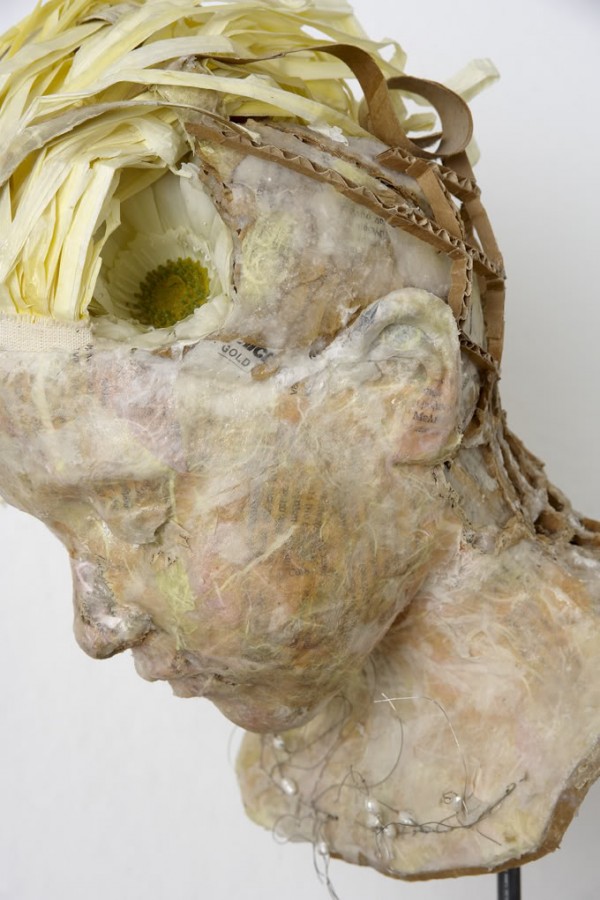Papier-mâché (literally chewed paper) is most often associated with childhood model making and has a home crafting ethic but some artists have taken it to the level of fine art through innovative model making. When it is incorporated into mixed media forms the papier-mâché can get reduced to a purely structural material and all childlike references dissipate. So the fascinating aspect to using this material is how much the artist plays on the childhood/crafting aesthetic.
Claes Oldenburg created a ray gun using papier-mâché to poke a sarcastic stick at the US obsession with space travel. The gun is childlike and more like a hair dryer and is clearly a parody of artist traditions. What I enjoy about this piece is how an object that has potentially been made by a child has been elevated to the position of political commentary. This ability of a material to give a voice to an ignored or forgotten portion of society has real potency and certainly resonates with what I am trying to achieve in my outcome.
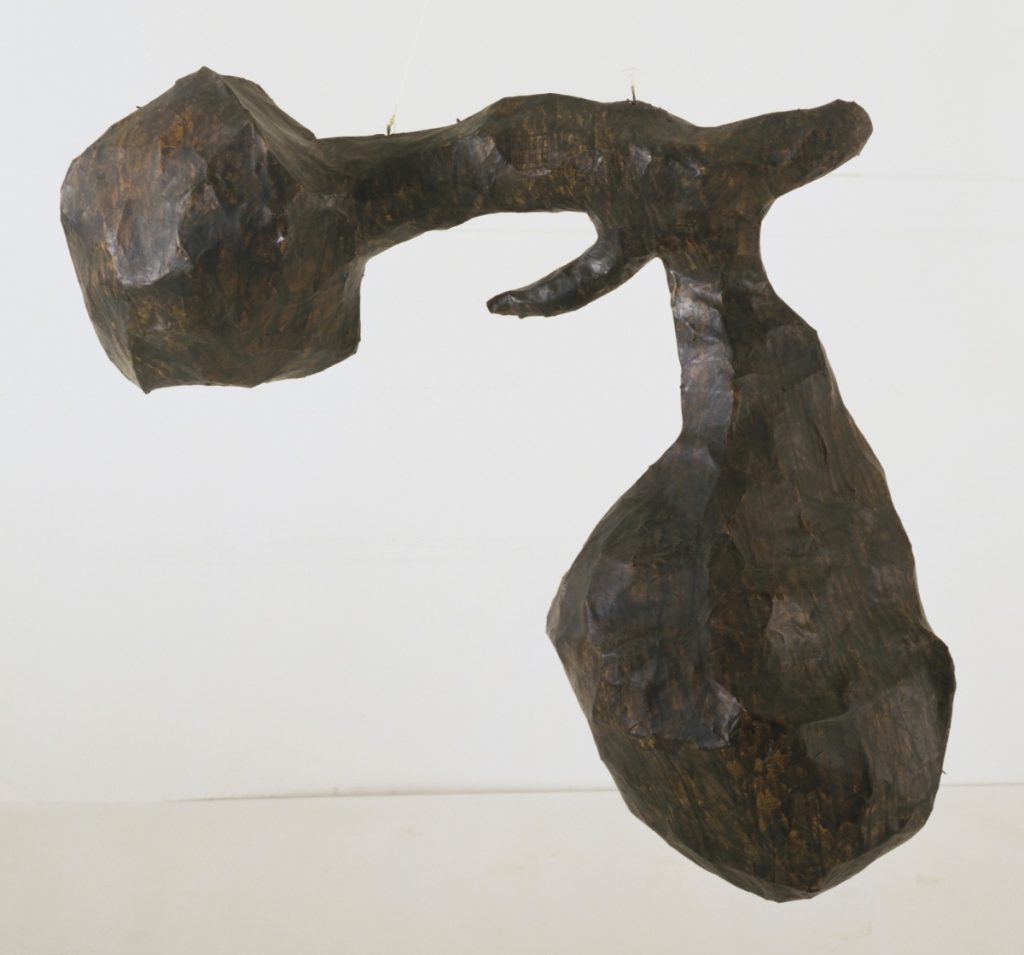
Nicole et Aude keeps her shapes simple and lets the words on the print define the object. These pieces are more ornamental pop art than those of Oldenburg but what drew my attention was the potential of adding colour and typography. Aude’s pieces are gloss finished which lifts them away from the rough attempts of a child. The potential of adding key imagery and typography from newspapers is a consideration for adding a deeper allegorical meaning but we should also note the care with which Aude has laid the paper on her models. The arrangement of colours and type is intentional and clearly the work of a professional. In my own work I need to determine whether I’m using papier-mâché to represent the voice of a child or merely as a casual reference point. My current thinking is to pursue the careful laying of paper to show intent and care (rather than random and roughly made pieces). Second to this, the addition of bold typography of key words is certainly worth experimenting with.
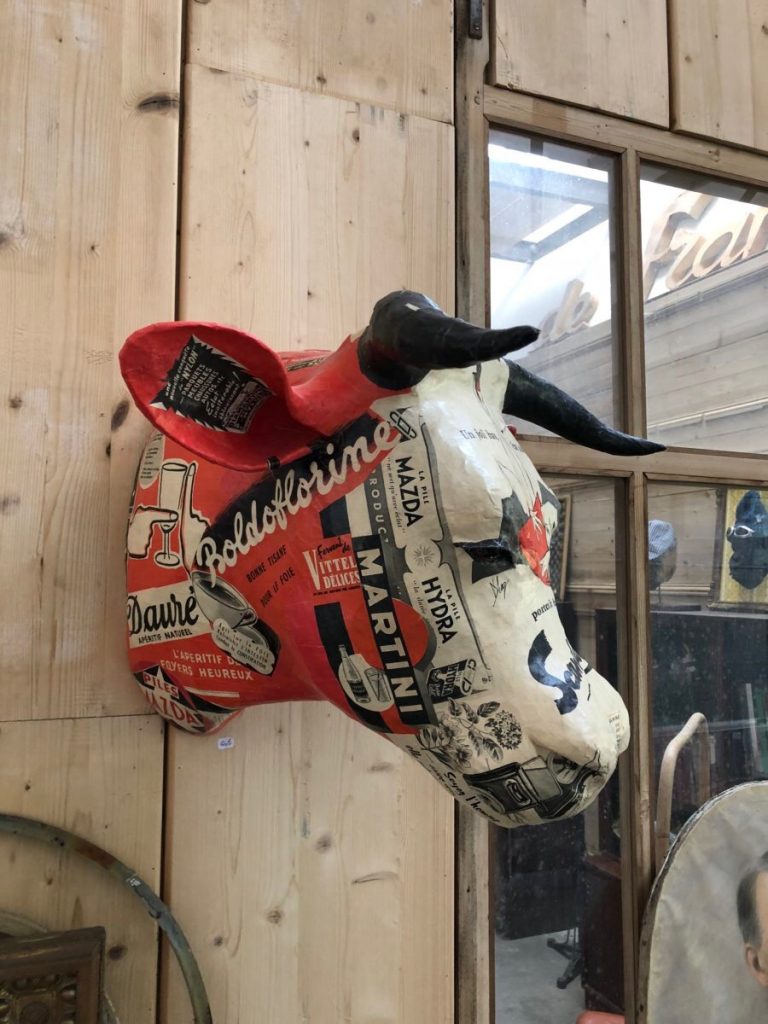
James Morrison creates monochrome papier-mâché pieces. These are fantasy objects and the paper structure has been painted over such that we wouldn’t really know these were made of paper. Much as I like these objects the removal of the raw paper surface has highlighted how important this is to my own work. What I take forward is how critical the childhood reference and raw newspaper appearance is in my outcome. The key is getting the balance just right, as I believe Claes Oldenburg did in his ray gun – that skill in pitching two competing elements together to shout out the loudest message is what I am aiming for.
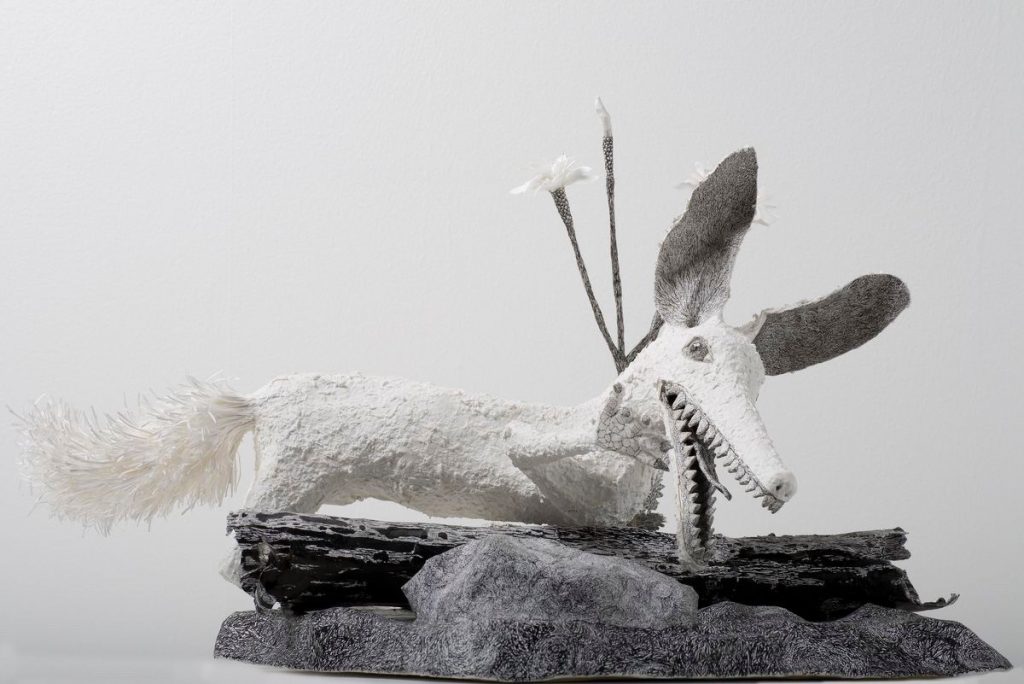
Greek artist Vally Nomidou creates paper sculptures of women and girls. These are life size, highly realistic and the paper work is not significantly hidden – we can see its raw state poking through. The paper is not being used as a structural material, it is the finished product and it’s as if we are seeing under the skin of the figures. The wire appears to be holding the bodies together but not quite – they could burst open at any moment. These figures say so much because of the material that has been used – we could be seeing death, raw emotion and with the snippets of newsprint we see these could be the uttered words of that individual. Of all the examples of papier-mâché I’ve found, this artist has elevated the medium to the highest form of art in my opinion. The replication of the human body using papier-mâché shows a different type of fragility than any other type of sculptural material and this has real relevance to my own work. Delicacy has an immediate reference to trauma and its impact. The additional potency is how the newsprint has encapsulated the body completely – the owner actually wears those memories and sees them even when they close their eyes.
Based on the above research, construction of a human / part human form using papier-mâché will be experimented with next. Encrusting a human form with past memories creates a rich narrative – the challenge then is how to incorporate that with the milk paintings.
